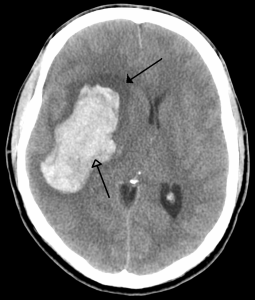 An international study, lead by New Zealand researchers, has calculated the total worldwide cost of stroke in terms of years of good health lost to death and disability — 100 million years.
An international study, lead by New Zealand researchers, has calculated the total worldwide cost of stroke in terms of years of good health lost to death and disability — 100 million years.
The research, published in leading medical journal the Lancet, used data from the Global Burden of Disease Study 2010 (GBD 2010) to estimate the global and regional burden of stroke during 1990-2010.
In 2010, the absolute numbers of people with first stroke (16·9 million), stroke survivors (33 million), stroke-related deaths (5·9 million), and disability-adjusted life years lost (102 million) were high and had significantly increased since 1990, with most of the burden falling on low-and middle-income countries.
Furthermore, the overall amount of disability and illness and premature death caused by stroke is projected to more than double worldwide by 2030.
In New Zealand between 1990 and 2010 the incidence rate of stroke decreased by 27% and the stroke mortality rate dropped by half.
A second study, published simultaneously in Lancet Global Health, takes a closer look at the different subtypes of stroke, finding that haemorrhagic stroke causes more disability and death than ischaemic stroke, despite being less common.
The Science Media Centre gathered the following expert commentary.
Professor Valery Feigin, Director of the National Institute for Stroke and Applied Neurosciences at AUT University, and lead author on the Lancet paper, says:
“Our study shows that the global burden of stroke continues to increase, with 16.9 million people affected by stroke annually resulting in more than 100 million disability-adjusted life-years lost. There is also a worrisome global trend showing an increase in the number of strokes in young and middle aged adults by 25% between 1990 and 2010. This epidemic of stroke can and should be stopped and reversed, as more than 90% of strokes are potentially avoidable.
“While management strategies for primary stroke prevention in high cardiovascular disease (CVD) risk individuals (including stroke and transient ischaemic attack) are well established, they are under-utilised, and existing methods of primary stroke prevention are not sufficiently effective. The healthcare system has so far been largely unsuccessful in providing meaningful information to assist people to adhere to recommended lifestyle and medication. Uptake of this information is particularly low in people with moderately increased risk of stroke who would benefit from lifestyle changes.
“In NZ, over the last two decades the number of people annually affected by stroke has increased by 30% (7600 new strokes in 2010) and the total number of stroke survivors has increased by 82%. The prevalence of stroke over that time period has also statistically significantly increased by 13%, likely owing to improved stroke care and aging of the population. The good news for NZ is that stroke mortality rates and disability-adjusted life years lost rates reduced by half.”
Prof Ruth Bonita, Professor Emeritus, University of Auckland and independent global public health practitioner, comments:
“Stroke is no longer the Cinderella of vascular diseases.
“The huge improvements in death rates achieved in wealthy countries now need to be replicated in middle-income countries where the bulk of stroke occurs.
“The impressive reductions in child and maternal mortality as well as in HIV/AIDS, malaria and other infectious diseases over the past two decades, means that people everywhere are living longer than ever. So, not only is the population growing but it is also ageing, placing ever larger numbers of people at risk of a stroke or heart attack which together, are the leading causes of death worldwide.
“A three pronged attack is required to reduce stroke and heart disease: mass reductions in tobacco use though accelerated implementation of the Framework Convention on Tobacco Control; working with industry to reduce salt in the food chain to reduce blood pressure and to prevent stroke in the first place; and making sure that all those who suffer a stroke or heart attack receive treatment with cost-effective drugs.
“These cost-effective interventions will go a long way to achieving a good outcome in poorer countries. It is scandalous that only 6% of people in low-income countries who have a stroke or heart attack (compared with more than 90% in high income countries), leave the hospital facility having been offered basic medicines which are affordable and effective in preventing another event; this is an emergency situation and requires a urgent response.”
Dr Rita Krishnamurthi, Senior Research Fellow at AUT University’s National Institute for Stroke and Applied Neurosciences, and lead author on the Lancet Global Health paper, says:
“Our studies have shown for the first time accurate estimates of stroke burden in the very young (younger than 20 years). While incidence rates in this group have decreased in high income countries, in low-income and middle-income countries, the incidence of haemorrhagic strokes in particular has increased in the past two decades. More focussed attention needs to be paid to the prevention and improved treatment of childhood strokes, especially in low-middle income countries where the current and projected future burden of stroke is greatest.”